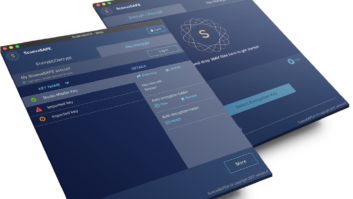
While I’ve always tried to center my career goals around creating music, it hasn’t always worked out that way. Fifteen years ago, the titles Educator, Magazine Editor and Video Editor/Producer weren’t even close to being on my list of “Top 10 Skills You Should Develop by 2010.” And while I wouldn’t call the video bit necessary for survival, it’s the one I’m having the most fun with right now. It allows me to communicate on a new level that, thanks to the Internet, is the hottest ticket in town.
Just recently, I got my hands on the Roland VR-5 A/V mixer/recorder and produced a live video teaser of an open house at the Conservatory of Recording Arts & Sciences, where I wear my educator hat as instructor and director of education. With a crew of eight, three cameras, rudimentary lighting, and wireless and wired audio all powered by a car battery through an inverter, we rolled through four studios, a live sound venue and classrooms, editing as we went. I then sweetened it in iMovie adding B-roll and titles. While it fell below my standards for release in prime time, it was a great experience in coming up with process, teaching me how to tighten it up next time around.
In the past year, I’ve also produced Mix Webcasts sponsored by Mackie, Lynx and Shure using a combination of video, audio and stills all put together in iMovie, then streamed to thousands across the globe. The initial presentation is 30 to 40 minutes, ending with a live-moderated audience Q&A. The production values sit squarely between shaky home movies and CNN, often being rough, but the great part is that it doesn’t matter. It’s all about the access, and it’s a growing trend.
Audio tech Jeff Harris with the rolling VR-5 rig
On YouTube, you can watch “Pensado’s Place,” where engineer Dave Pensado interviews star engineers like Tony Maserati, Ed Cherney and Bruce Swedien, plus a range of other interesting audio folks including manufacturers and assistant engineers. There are nearly 30 well-produced episodes offering insights into the workflow, techniques and skills of people you would never have access to in the past unless you were on staff at a studio.
PureMix promises that the viewer will Learn What’s Not In the Manual. Engineer Fabrice “Fab” Dupont tackles a broad range of topics, like transparent vocal compression and tracking a variety of instruments. The videos are well done, with some free and others pay-to-view.
Back in February, while creating his latest album at Echo Mountain Studios (Asheville, N.C.) country artist Dierks Bentley streamed live video from his Website for 24 hours. It was a voyeur’s delight and drew more than 30,000 visitors.
There’s one elephant in the room with all this video, and that is, quite frankly, the horrible bandwidth-limited audio. It’s often necessary to dumb-down the quality to be sure all viewers, many of whom might be in places with very limited bandwidth, have the same experience. However, this is a short-term problem.
Sonic.net, a small Internet company based in Santa Rosa, Calif., is replacing old copper lines with fiber directly to the home. The company’s feeds are not data-limited, and the fastest package (40 Mbits/sec) is only $69.95. And it’s profitable, according to a recent article in the San Francisco Chronicle. AT&T is laying fiber in areas of new construction, and Comcast, the largest U.S. broadband provider, recently unveiled a 1-gigabit/sec service over existing cable. All this competition means that we, as users, will see faster, speed-cap-free service in the near future. Once that happens, you could potentially stream full-bandwidth audio with video and that will blow the roof off.
Streaming and live-captured video is the next new way for studios, audio pros, manufacturers, artists, labels, churches and more to open new revenue streams, expand their brands and embrace the future of education. The good news is that the tools are cheap, the demand is high and there are ways to monetize the content through sponsorship and pay-per-view. The way this is growing is reminiscent of how the film industry expanded in the previous century. But now, instead of the business growing vertically on a limited number of platforms, it’s a mile wide and in inch deep—open for everyone to find their way.
Bottom line? Making your audio more than just audio couldn’t be easier or come at a better time.



